CT Imaging of Neandertaler Fossils
In the summer of 1856 quarrymen discovered the fossilised remains of a skeleton in the Neander Valley (Neandertal near Mettmann, Germany), which gave the Neandertaler his name. These fossils have been digitized with computed tomography. The original bones have been provided by the Rheinisches LandesMuseum Bonn.
Further information in German: Rheinisches LandesMuseum Bonn
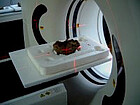
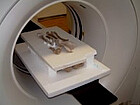
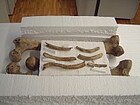
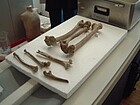
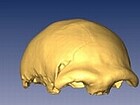
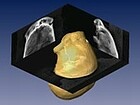
CT scan and corresponding 3D model of the Neandertaler fossils
Cooperations
- Dr. Ralf Schmitz (University of Tübingen)
- Dr. Marcia Ponce de Leon (University of Zürich)
- Prof. Dr. Christoph Zollikofer (University of Zürich)
Publications
2007[ to top ]
-
Virtuelle Rekonstruktion und stereolithographisches Modell eines jungneolithischen Schädelfundes aus der Blätterhöhle in Hagen, Nordrhein-Westfalen, Archäologische Informationen, 30(1), 35–41, 2007, DOI: 10.11588/ai.2007.1.11152.
2006[ to top ]
-
Computed Tomography – A Tutorial for Anthropologists, In: Neanderthal 1856-2006, Verlag Philipp von Zabern, Mainz, 247–256, 2006, ISBN: 9783805336673.
- [ BibTeX ]
-
Editorial to the Special Issue on Computer-Assisted Craniofacial Reconstruction and Modeling, Journal of Computing and Information Technology, 14(1), 1–6, 2006.
- [ BibTeX ]
-
Forensische Gesichtsrekonstruktion. Ein Überblick über forensische, anthropologische und chirurgische Fragestellungen, Zeitschrift für Kriminalistik, 8-9(60), 502–505, 2006.
- [ BibTeX ]
-
Micro-CT Bildgebung an Zähnen des frühen Mittelpaläolithikums aus der Kratermulde des Schweinskopfes bei Bassenheim, Kr. Mayen - Koblenz, Berichte zur Archäologie an Mittelrhein und Mosel, 11, 9–19, 2006.
- [ BibTeX ]

- Research
- Biochemical Engineering
- Magnetic Particle Imaging
- Magnetic Resonance Imaging
- Nuclear Imaging
- Image Computing
- X-Ray Based Imaging
- SAIL
- Completed Projects
- Forensic Workplace for Soft Tissue Reconstruction
- Restoration and Conformal Mapping of Triangulated Surfaces
- Skin-Tumour Classification with Functional Infrared Imaging
- CT Imaging of Neandertaler Fossils
- Radiographic Investigations of Micro Ruptures in Technical Diaphragms
- T-Ray Imaging
- In-silico brain tumor growth
- Limited Angle Tomography
- Spectral X-Ray Diffraction


